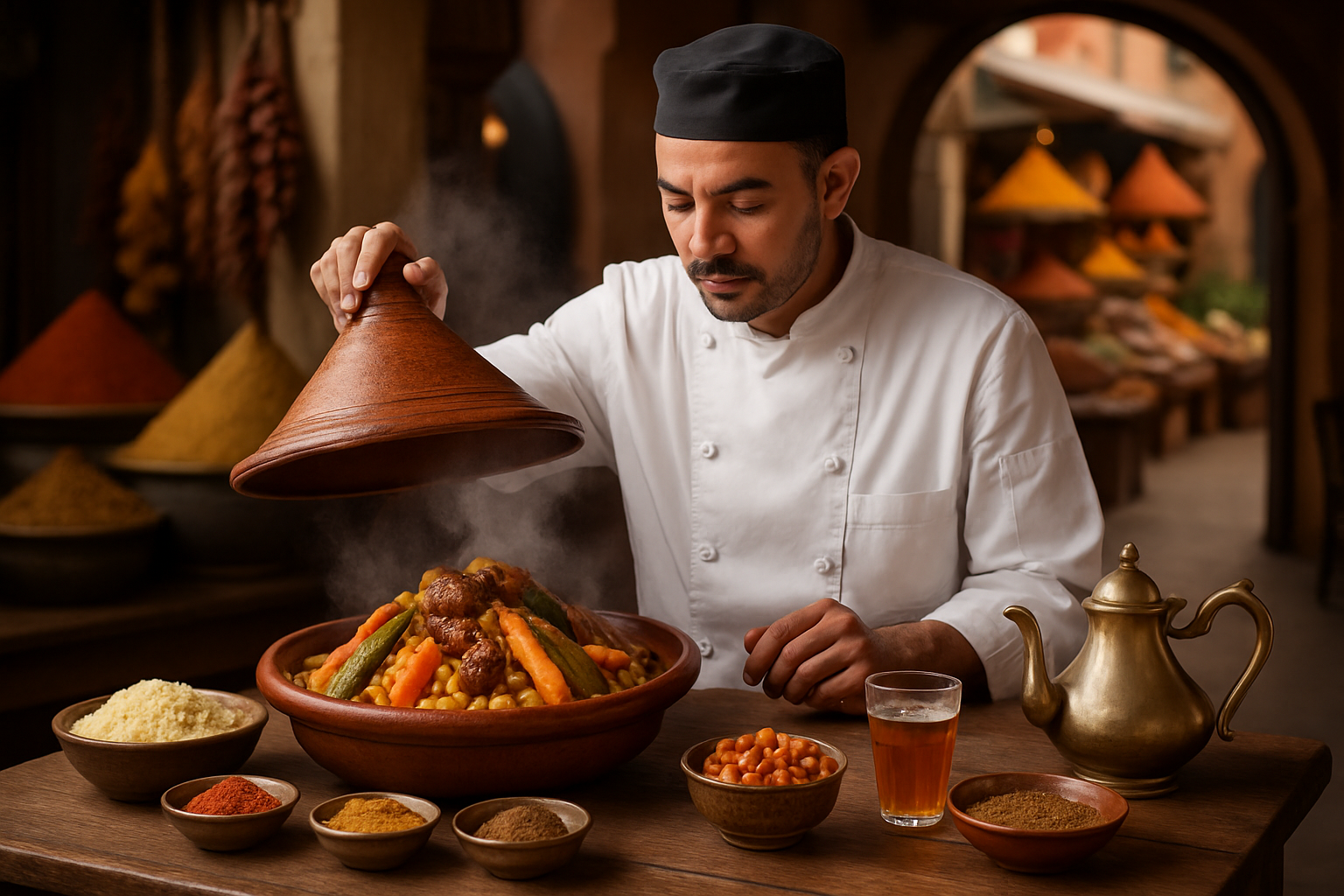Unmasking the Mysteries of Moroccan Cuisine
Moroccan cuisine is a vibrant fusion of African, Arab, and Mediterranean influences. Its rich flavors and distinctive cooking methods make it a fascinating subject for culinary enthusiasts. Let's dive into the world of Moroccan gastronomy and discover what makes it truly unique.

The Soul of Moroccan Cuisine
Moroccan cuisine is characterized by its use of a variety of spices like saffron, cumin, coriander, and cinnamon. These spices give Moroccan dishes their distinctive, aromatic flavors. The mainstay of Moroccan meals is couscous, served with meat and vegetables. Tagine, a slow-cooked stew named after the conical earthenware pot it’s cooked in, is another staple of Moroccan cuisine.
The Art of Preparing Moroccan Tea
Moroccan mint tea is a symbol of hospitality and friendship. It’s a blend of green tea, fresh mint leaves, and a generous amount of sugar. The process of making it is an art - the tea is traditionally poured from a height to create a frothy top, a skill that takes practice to perfect.
Moroccan Bread Culture
In Morocco, bread is not just a side dish - it’s an integral part of the meal. It’s used as an eating utensil, to scoop up food and soak up sauces. Types of bread vary across the country, from the flat, round khobz to the pancake-like msemen and the fluffy, yeast-risen batbout.
The Role of Sweets in Moroccan Cuisine
Sweets play a crucial role in Moroccan cuisine, especially during festivals and celebrations. Pastries like gazelle horns, a crescent-shaped almond paste-filled pastry, and makroud, semolina dough stuffed with dates and nuts, are popular treats.
The Ritual of Moroccan Dining
Dining in Morocco is a communal experience. Meals are traditionally shared from a communal plate, and it’s customary to eat with your right hand. The meal often starts with salads and dips, followed by a main course and ends with fresh fruits and mint tea.
A Taste of Morocco: Key Insights
- Spices are the heart of Moroccan cuisine, with saffron, cumin, coriander, and cinnamon being the most commonly used.
- Moroccan mint tea, known for its sweet, refreshing flavor, is a symbol of Moroccan hospitality.
- Bread, in its many forms, is a staple of Moroccan meals.
- Sweets and pastries are integral to Moroccan celebrations and special occasions.
- Moroccan dining is a communal experience, with meals often shared from a communal plate.
In conclusion, Moroccan cuisine is a rich tapestry of flavors, traditions, and rituals. Its emphasis on communal dining and the use of fresh, aromatic spices make it a culinary experience like no other. Whether you’re a seasoned foodie or just starting your culinary journey, the world of Moroccan cuisine offers endless opportunities to explore and taste new flavors.




